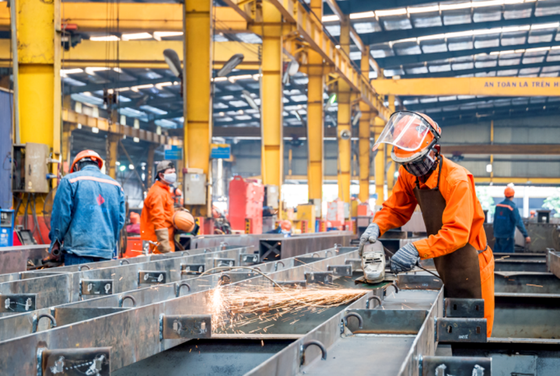 |
Ho Chi Minh City to reboot industrial development strategy (Photo: SGGP) |
Mr. Vo Van Hoan, Vice Chairman of the municipal People’s Committee said that over the past years, the economic structure of the city has changed, basically in line with the general development trend. Currently, the service sector accounts for a high proportion of the economy, at 65 percent, while industry and construction make up 31 percent, and agriculture about 1 percent.
However, a sustainable economic sector must be based on industrial production and agricultural production to create goods for consumers. An economy that focuses too much on services without a solid base in industrial production is at the mercy of outside economic swings.
Therefore, although the economic structure of the city is transforming towards modernity, the locality also needs to pay attention to promoting the development of production to create a balance and ensure long-term economic sustainability.
According to Mr. Hoan, the city developed industry quite early, as it is home to many industrial parks and export processing zones operating since the 1990s. This means that many technologies are now outdated. These industrial parks use a lot of resources, and labor with low added value, even in large manufacturing enterprises of the city.
Meanwhile, new and potential industries have not been invested in and developed, such as the fashion, film, cultural, and supporting industries. Thus, the local economy requires a drastic change in the mindset and actions of leaders at all levels. This is especially the case in the business community in order to create a revolutionary breakthrough for the city in industrial production in the coming years.
Dr. Truong Minh Huy Vu, Deputy Director of the HCMC Development Research Institute, said the locality is one of the major industrial hubs, making an important contribution to the industrial development of the country.
However, the industrial density of the city and the industrial structure of the country is experiencing a downward trend. In 2010, the city's industrial sector accounted for 15.38 percent of the country's industrial value-added. By 2021, the share dropped to only 8.7 percent, down 6.68 percentage points compared to 2010.
In fact, the city does not have available resources for industrial development, especially land resources. In addition, the city's policy to limit the attraction of investment projects in labor-intensive industries, coupled with the trend of industrial production relocation from the city to other provinces, also slow down the growth of the industrial sector.
According to Vu, in the coming time, the city needs to focus on exploiting local potential and advantages as a hub of science, technology, and innovation of the country for industrial development. The hub needs to effectively exploit the land and high-skilled human resources while applying the achievements of the 4.0 revolution to improve productivity, quality, and efficiency of sectors and industrial products.
HCMC also needs to support the development of priority industries, develop an industrial land fund, support capital and attract investment, and support the development of science-technology and the market, and trade promotion, Vu suggested.
























